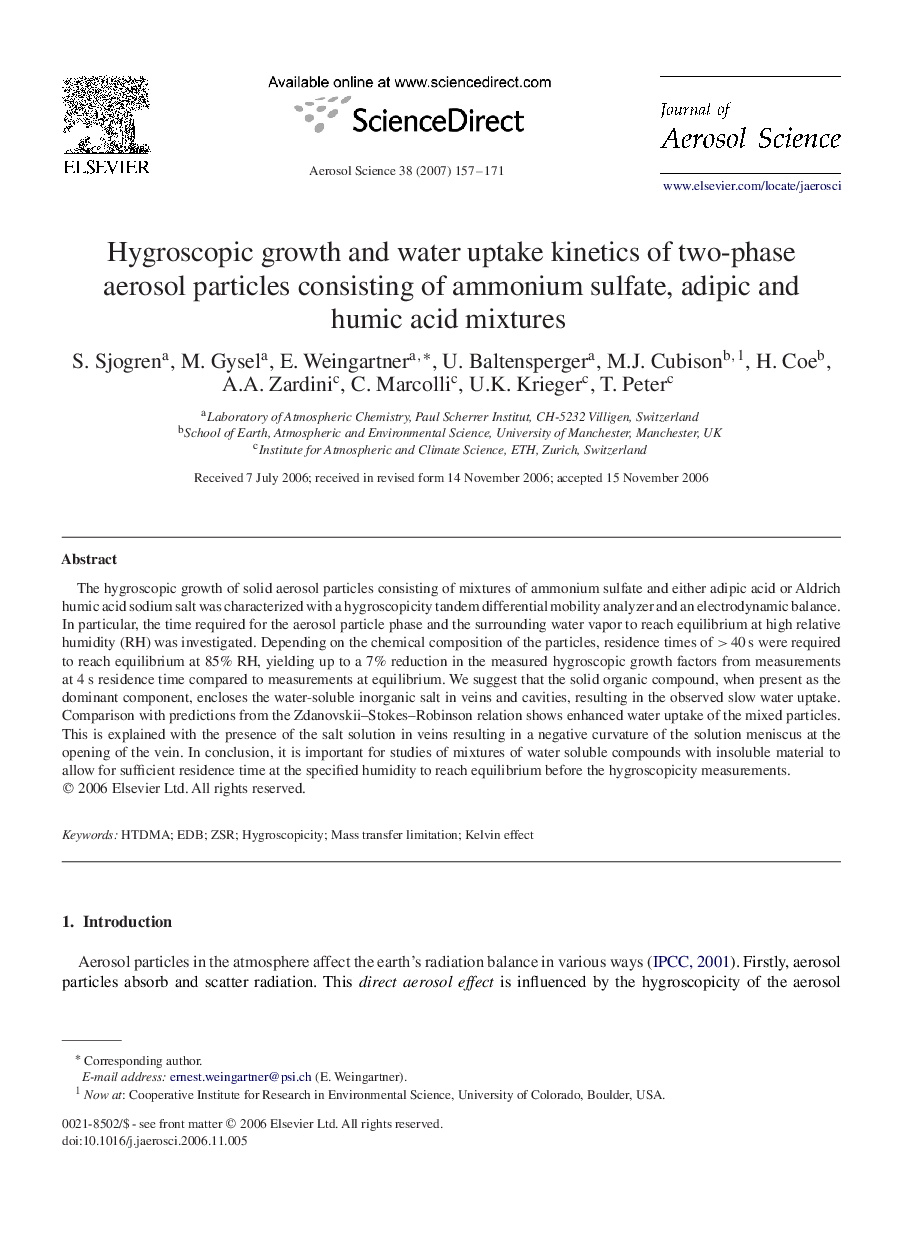| Article ID | Journal | Published Year | Pages | File Type |
|---|---|---|---|---|
| 4453256 | Journal of Aerosol Science | 2007 | 15 Pages |
The hygroscopic growth of solid aerosol particles consisting of mixtures of ammonium sulfate and either adipic acid or Aldrich humic acid sodium salt was characterized with a hygroscopicity tandem differential mobility analyzer and an electrodynamic balance. In particular, the time required for the aerosol particle phase and the surrounding water vapor to reach equilibrium at high relative humidity (RH) was investigated. Depending on the chemical composition of the particles, residence times of >40s were required to reach equilibrium at 85% RH, yielding up to a 7% reduction in the measured hygroscopic growth factors from measurements at 4 s residence time compared to measurements at equilibrium. We suggest that the solid organic compound, when present as the dominant component, encloses the water-soluble inorganic salt in veins and cavities, resulting in the observed slow water uptake. Comparison with predictions from the Zdanovskii–Stokes–Robinson relation shows enhanced water uptake of the mixed particles. This is explained with the presence of the salt solution in veins resulting in a negative curvature of the solution meniscus at the opening of the vein. In conclusion, it is important for studies of mixtures of water soluble compounds with insoluble material to allow for sufficient residence time at the specified humidity to reach equilibrium before the hygroscopicity measurements.
